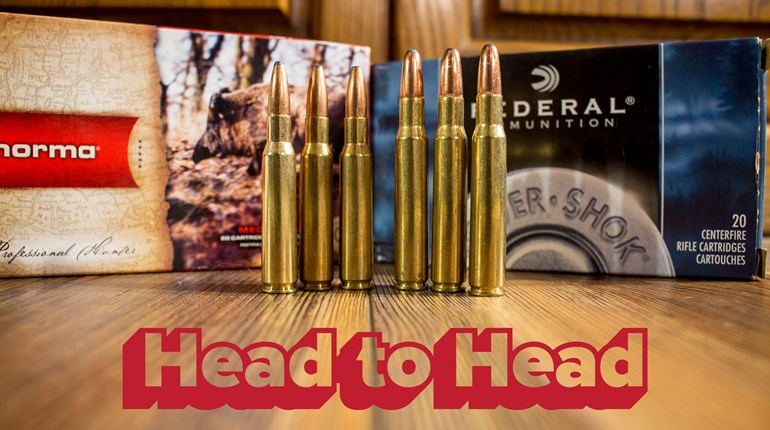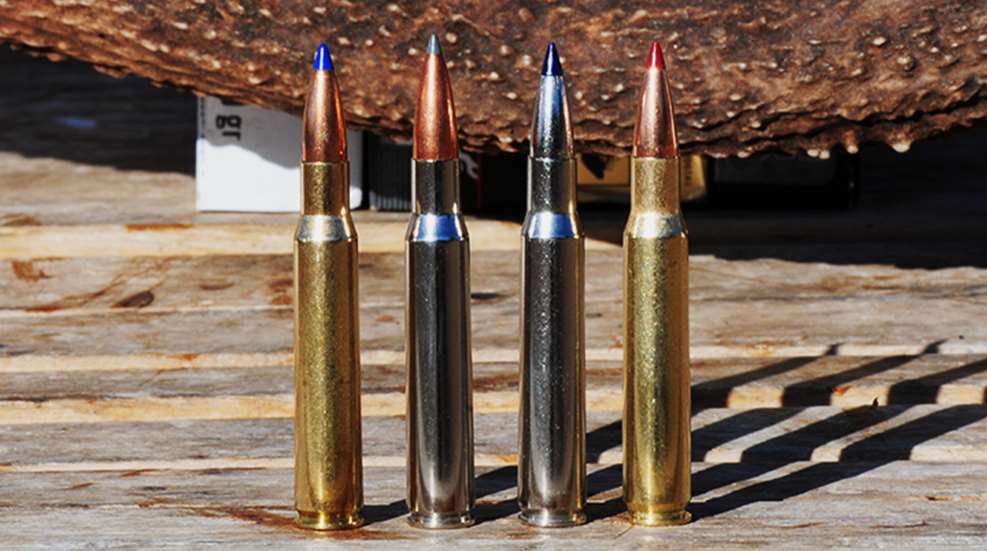
For over a century, the .30-06 Springfield has reigned supreme as America’s number one all-around big game hunting cartridge. For sheer ability, versatility and availability, and from the eastern whitetail woods to the western canyons and crags that elk call home, the ‘Ought-six has been the most popular hunting cartridge in existence. Until now.
Recent years have seen innovation in the firearms industry heretofore unprecedented. Rifles are more accurate, bullets are more streamlined and riflescopes are more capable than hunters a half-century ago could have imagined. Add laser rangefinders to the mix, and all the rules have changed.
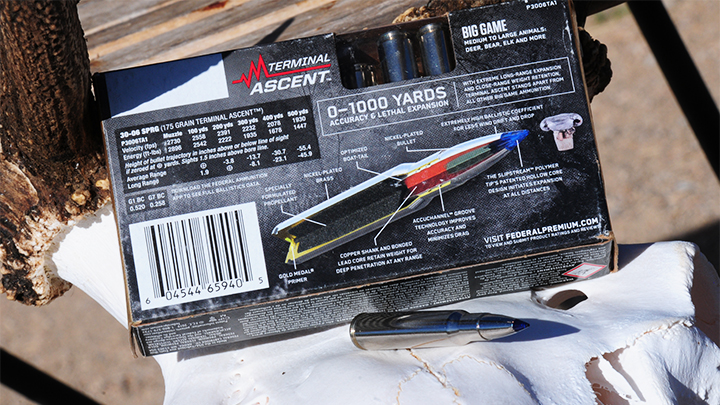
Ammunition manufacturers and engineers saw the writing on the wall. They rose to the occasion with newly designed cartridges that are more consistent, more efficient and more precise than ever before. As a result, the 115-year-old .30-06 just may have to gracefully hand the “most popular” position to a new leader. After all, folks are calling the 6.5 Creedmoor the “.30-06 of the new century.” Do we believe that?
I don’t. Not for big-game hunting, at least. Much as I love the 6.5 (and I am a fan), the Creedmoor leaves much to be desired when hunting game larger than deer. Well then, what about the 6.5 PRC, 28 Nosler and .300 PRC? All are new, accurate, high-performance cartridges. Shouldn’t they beat out the old ‘ought-six in the struggle for top cartridge? Perhaps. But before we jump to conclusions let’s look at what wins a cartridge the title of “Best All Around.”
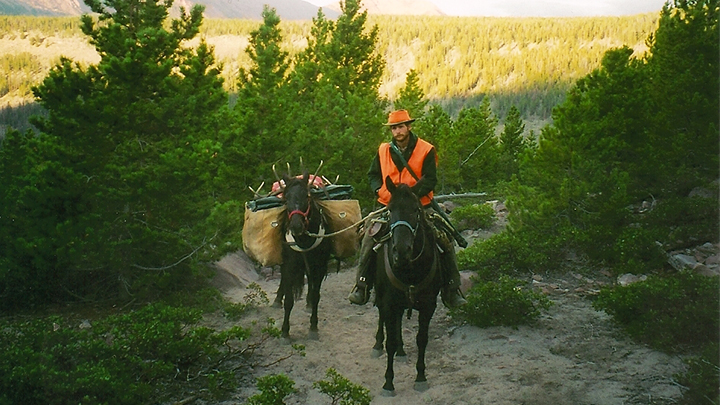
What Makes a Cartridge the All-Around Best?
Let’s paint a picture of what will be expected of this all-around rifle. That will enable us to make an informed assessment of what makes or breaks a cartridge that’s trying for the top honors.
Let’s say you live anywhere in the US and love to hunt deer every year. These could be mid-western whitetails, northwest blacktails or southwestern mule deer; it really doesn’t matter. You love to hunt elk and pronghorn antelope every year too. And every few years you save up and make a trip to Alaska to hunt caribou or moose.
You’re not the kind of guy who likes to have a special rifle for every different species—you like to keep things simple. You’re a one-rifle man, and you know how to get the best out of your rifle. Since you’ll be hunting everything from coyotes to moose, your rifle needs to be chambered in a round that can shoot flat, hit hard, and be reliably available. Here, in no particular order, are our criteria.
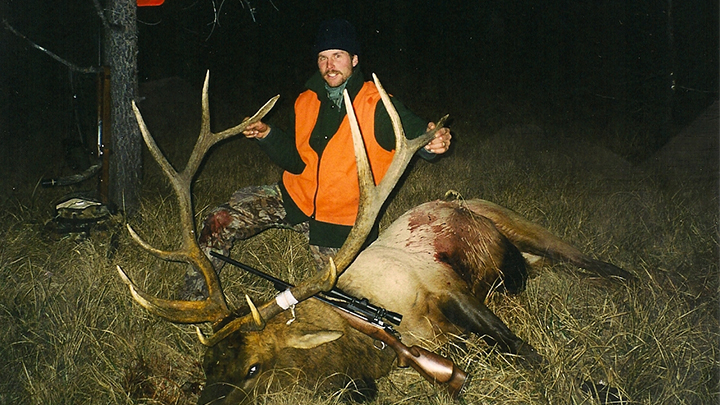
• Killing Capability: Since you’ll be hunting elk and moose on a regular basis, your all-around cartridge needs to be capable of handling projectiles weighing at least 160 grains, and ideally more. Yes, you can kill an elk or moose as dead as Methuselah with a 6.5 Creedmoor, but the same thing can be said for a .22 Long Rifle. That doesn’t make it a great elk and moose cartridge. In my opinion, this criteria eliminates all of the 6.5 cartridges from this list. (I can already hear the howls of dissent. Remember, I’m not saying the 6.5s aren’t capable of killing elk and moose. I am saying cartridges exist that are better at killing elk and moose.) I believe that great elk and moose killers begin with the 7mm and .30 caliber cartridges. The ‘ought-six packs enough punch to comfortably get the job done, and is more agreeable to shoot than most of the magnum cartridges.
• Versatility: Since you’ll be hunting small(ish) game as well as big, your ideal cartridge will be capable of shooting light, fast projectiles as well as heavy ones that are optimal for the big stuff. Sure, you can kill a coyote—or better yet, a prairie dog—with a 200-grain moose whomper, but it’s much more fun (and less punishing to the shoulder) with a sizzling-fast 110 grain varmint pill. This is one area where the .30-06 outshines pretty much all other big-game cartridges. It will happily digest loads topped with bullets ranging from 110 grains up to 220 grains.
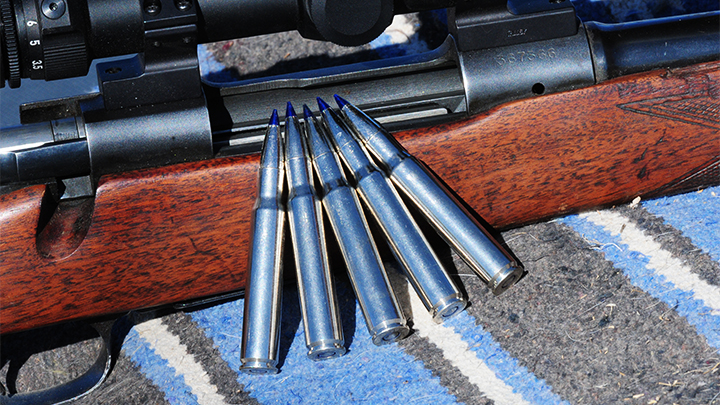
• Long Range Capability: Okay, here we address the single issue that is responsible for the ought-six’s decline in popularity. It simply doesn’t possess the long-range, wind-bucking capability of many modern big-game hunting cartridges. This is primarily due to the fact that it’s not optimized to shoot super high BC (ballistic coefficient) bullets. But while we’re talking about long-range shooting, lets discuss exactly how much long-distance capability you’ll need from your rifle.
In my experience, (which includes decades of hunting and/or guiding for elk, mule deer, whitetails, pronghorn, Coues deer and moose), over 90 percent of shot opportunities occur inside of 300 yards. Even when hunting the wide-open spaces of the West. It is usually possible to stalk within 300 yards of any animal you want to shoot.
That said, there are cases where circumstances will not allow you to close the distance. You’ll be called upon to shoot long or say goodbye. My personal biggest rifle-killed elk and biggest Coues deer were both long shots, where the situation precluded getting any closer. That said, my longest-ever shot in a quarter-century of hunting big game was still less than 700 yards. I personally believe if you can shoot accurately to 650 or 700 yards, and your cartridge carries enough authority to kill cleanly at the same ranges, you will never miss an opportunity at an animal. (Most of us have no business shooting further than that at game anyway, and to ethically shoot even that far we must make long-range shooting a lifetime passion.) As you can see on the chart below, even the .30-06 Springfield has both the velocity and the energy to capably harvest game out to 700 yards, when coupled with the right projectile. Yes, it’s running on fumes at that range, but it’s still running.
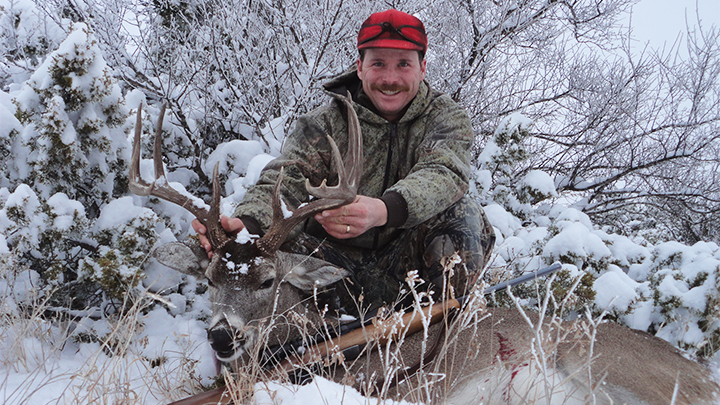
• Magazine Capacity: It’s odd to me that many of today’s shooters completely disregard magazine capacity. Most of the new cartridges (6.5 PRC, 28 Nosler, etc.) sport fat-diameter cases that aren’t good at sharing magazine space. Maximum magazine capacity is three, unless you go to an AICS-type mag, which I abhor on classic hunting rifles.
Personally, I really prefer a rifle with five cartridges snuggled into the magazine, which gives me six on tap if I drop one directly into the chamber. This may not seem important when hunting the Back 40 for whitetails, but try standing off an irritable grizzly bear with only three cartridges on tap. You might blow two into the ground in front of the bear trying to deter a self-for-dinner outcome, leaving you only one to shut down the bear if he gets determined. That might be okay if you’re shooting a .375 or bigger, which we’re not. With anything smaller, you’ll be well served to have extra cartridges on tap. And even if you never hunt in a place where bears live, there are times when having more than three shells in your magazine becomes important. This, to my way of thinking, gives the .30-06 a decided advantage over today’s short, fat cartridges.
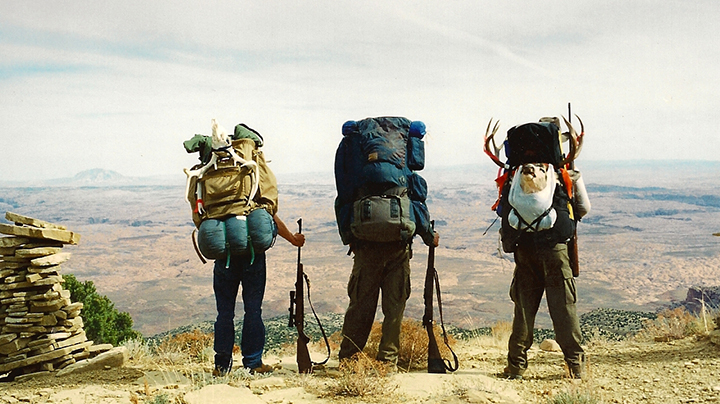
• Availability: This is the last criterion that I believe is truly important in an all-around rifle cartridge. Boutique cartridges, wildcat cartridges, and even the latest-greatest cartridges can be maddeningly difficult to find in an airline-induced missing-ammo emergency. Don’t even hope to find the right flavor. Yes, lots of good cartridges like the 7mm Rem Mag, .270 Winchester, .300 Win Mag. and others are readily available at every sporting goods store. But nothing can compare in availability and variety to the legendary .30-06. After all, it’s had over a century to build a repertoire.
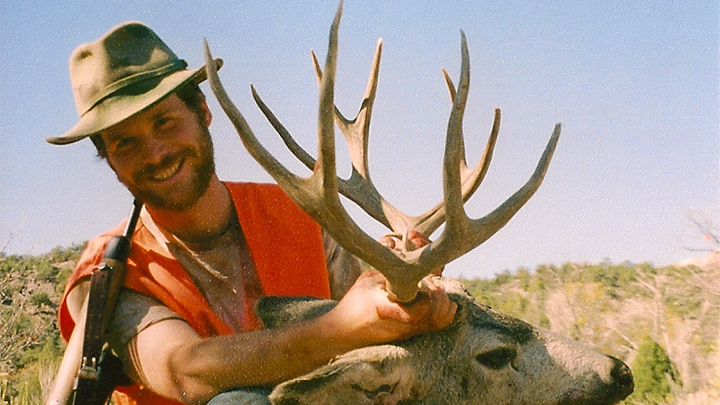
Conclusion
Is the .30-06 Springfield the most capable, effective cartridge available? No, it is not. There are more capable, effective cartridges available, including the 28 Nosler, the .300 PRC, the 7mm Rem. Mag., the .300 Win. Mag. and more. But if you factor in our criteria outlined above, we have a strong argument that the .30-06 still remains America’s best all-around big-game hunting cartridge. That will someday change, as ammunition availability and variety continue to grow. But for now, my vote still goes to the historic ‘ought-Six.
Ironically, the one cartridge that I think should trump the old grand master is not new—but recent innovation has brought out its true capabilities. Designed as a wildcat cartridge a half-century or more ago, the .280 Ackley Improved cartridge was far ahead of it’s time. Now, after being standardized by SAAMI and being added to the lineup of several major ammo manufacturers including Nosler, Hornady and Federal Premium, the cartridge is steadily gaining popularity. It features all the virtues of the .30-06 (its grandparent cartridge) except for variety and availability of ammo. Furthermore, the .280 AI offers superb long-range ability. Peruse the chart below, wherein I compare similar loads in the 6.5 Creedmoor, the .30-06 and the .280 Ackley Improved, and you’ll see what I mean.
So, in the end, what is the current best all-around big game hunting cartridge? I’ll leave that decision up to you. For my money, it’s still the venerable .30-06 Springfield.
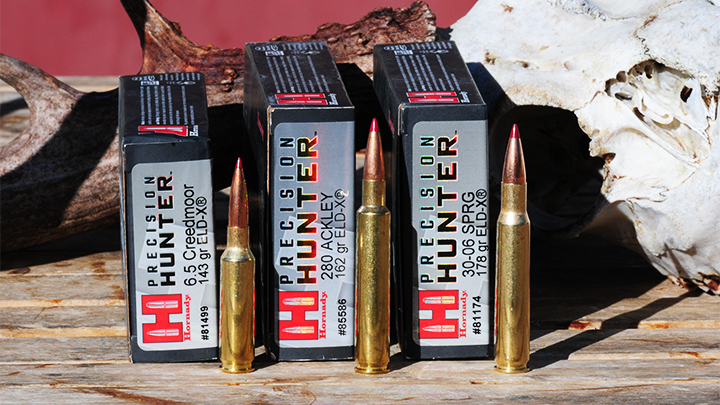
Comparison Chart
In the chart below, I compare the 6.5 Creedmoor, .280 Ackley Improved and the .30-06 Springfield. I used the same brand and type ammo in each—Hornady’s excellent Precision Hunter ammo, which features their very accurate aerodynamic ELD-X hunting bullet. This ammo is readily available and offers very good long-range performance. Another excellent long-range choice (for all three cartridges) is Federal Premium’s Terminal Ascent line. This ammo would be better for the big stuff—elk and moose.
6.5 Creedmoor
Elevation: 6,200 ft. | Muzzle Velocity: 2,700 | Bullet: 143-grain Hornady ELD-X | Zero: 200 yards
|
Range (yards) |
Drop (inches) |
Velocity (fps) |
Energy (ft.-lbs.) |
|
100 |
+1.72 |
2589 |
2,128 |
|
200 |
0.00 |
2477 |
1,949 |
|
300 |
-7.38 |
2368 |
1,781 |
|
400 |
-20.96 |
2262 |
1,625 |
|
500 |
-41.34 |
2158 |
1,479 |
|
600 |
-69.19 |
2058 |
1,344 |
|
700 |
105.25 |
1959 |
1,219 |
|
800 |
150.37 |
1864 |
1,104 |
.280 Ackley Improved
Elevation: 6,200 ft. | Muzzle Velocity: 2,850 | Bullet: 162-grain Hornady ELD-X | Zero: 200 yards
|
Range (yards) |
Drop (inches) |
Velocity (fps) |
Energy (ft.-lbs.) |
|
100 |
+1.47 |
2735 |
2,690 |
|
200 |
0.00 |
2591 |
2,468 |
|
300 |
-6.54 |
2507 |
2,260 |
|
400 |
-18.62 |
2397 |
2,066 |
|
500 |
-36.75 |
2289 |
1,885 |
|
600 |
-61.52 |
2185 |
1,717 |
|
700 |
-93.58 |
2083 |
1,560 |
|
800 |
-133.65 |
1984 |
1,415 |
.30-06 Springfield
Elevation: 6,200 ft. | Muzzle Velocity: 2,750 | Bullet: 178-grain Hornady ELD-X | Zero: 200 yards
|
Range (yards) |
Drop (inches) |
Velocity (fps) |
Energy (ft.-lbs.) |
|
100 |
+1.65 |
2623 |
2,720 |
|
200 |
0.00 |
2496 |
2,462 |
|
300 |
-7.23 |
2372 |
2,224 |
|
400 |
-20.64 |
2252 |
2,004 |
|
500 |
-40.92 |
2135 |
1,802 |
|
600 |
-68.82 |
2022 |
1,615 |
|
700 |
-105.24 |
1912 |
1,445 |
|
800 |
-151.17 |
1806 |
1,290 |
Want to read more from Aram von Benedikt? Check out the following articles:
• 10 Great Christmas Gifts for Hunters
• How to Field Judge a Mule Deer in 30 Seconds
• How to Call Elk: Strategy, Sequence and Setup
• How to Set Up a Ground Blind for Bowhunting
• Backcountry Mule Deer Hunting: Tools and Tactics
• Tips and Tactics for Hunting the West
• How to Prep for Elk Hunting: Physical Fitness, Mental Toughness, Shooting Skills and Shot Placement
• Hunting African Plains Game: How and Where to Place Your Shot
• Dream Hunt: How to Make an African Safari Come True
• Top 5 Backcountry Hunting Rifles
• Hunting Cartridges: Rising Starts of the New Millennium
• Tips and Tactics for DIY Hunting and Fishing in Hawaii
• Peccary Quest: Where and How to Hunt Javelina
• Tips and Tactics for Hunting Western Cottontails
• How to Convince Your Wife to Let You Buy as Many Guns as You Want
• Backcountry Survival Tips: How to Deal with Disaster
• DIY Backcountry Hunting Tactics and Gear
• How to Be an Ethical Long-Range Hunter
• Tips and Tactics for Hunting Coues Deer
• Essential Stalking and Still-Hunting Skills
• A Beginner's Guide to Traditional Bowhunting
• 6.5 Creedmoor Proven: How Does It Actually Perform on Big Game?
• How Hunting Rifles & Gear Have Evolved Over the Last 50 Years
• How to Sharpen a Knife
• How to Set Up Your Rifle and Scope for Long-Range Dialing
• 7 Common Predator Hunting Mistakes to Avoid
• 6 Tips for Hunting Public-Land Mule Deer
• 10 Tips for Bowhunting Elk
• Tips and Tactics for Bowhunting Mule Deer
• How Do You Build the Ultimate Western Big-Game Rifle?
• 10 Ways to Prep for Your Next Western Big-Game Hunt
• Tips and Tactics for Hunting Canyon-Country Gobblers
• 12 Tips for Shed Hunting the West















